Forbes Beeler Apartments
The 114,000-square-foot Forbes Beeler Apartments is located at the prominent intersection of Forbes Avenue and Beeler Street, marking an important east entrance to CMU’s campus. These apartments aim to create a comfortable home for 266 undergraduate students, elevate the campus’ public experience from the east and offer new amenities accessible to the entire campus.
The building’s position on campus places it on a well-traveled pedestrian route to the neighborhoods to the east. Encouraging further connection to the surrounding areas, a neighborhood grocery store at the corner of Forbes and Beeler, Scotty's Market, is accessible to the broader community. Learn more about the student experience living in Forbes Beeler, including video room tours.
These apartment-style residences are set back from the street for privacy, creating a quiet, comfortable environment for relaxation, wellness and sleep. Each apartment shares amenities, including a front porch, lounges, study rooms and game rooms. Natural sunlight, visual connection to the outdoors and red-list-free finishes enhance the student experience. This building has been awarded LEED Gold certification.
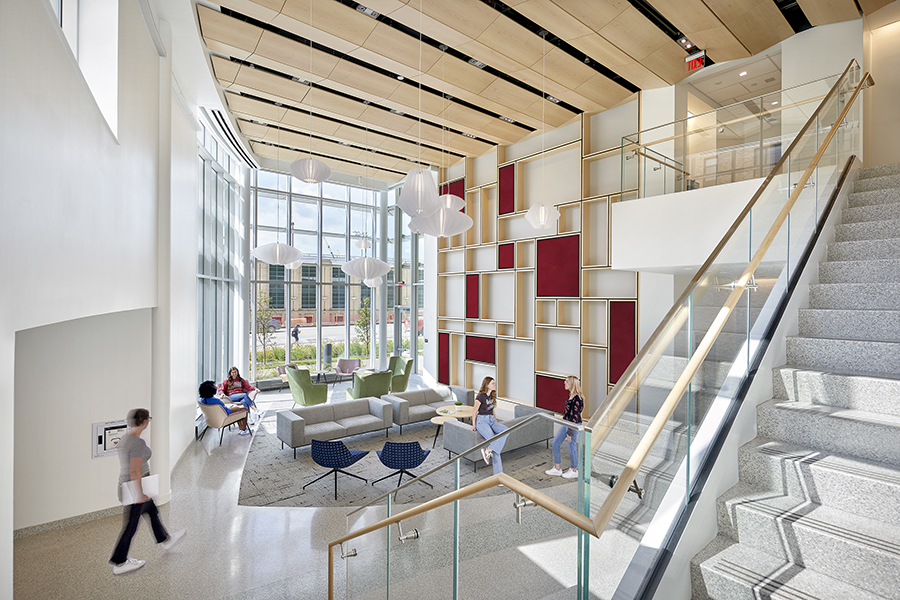
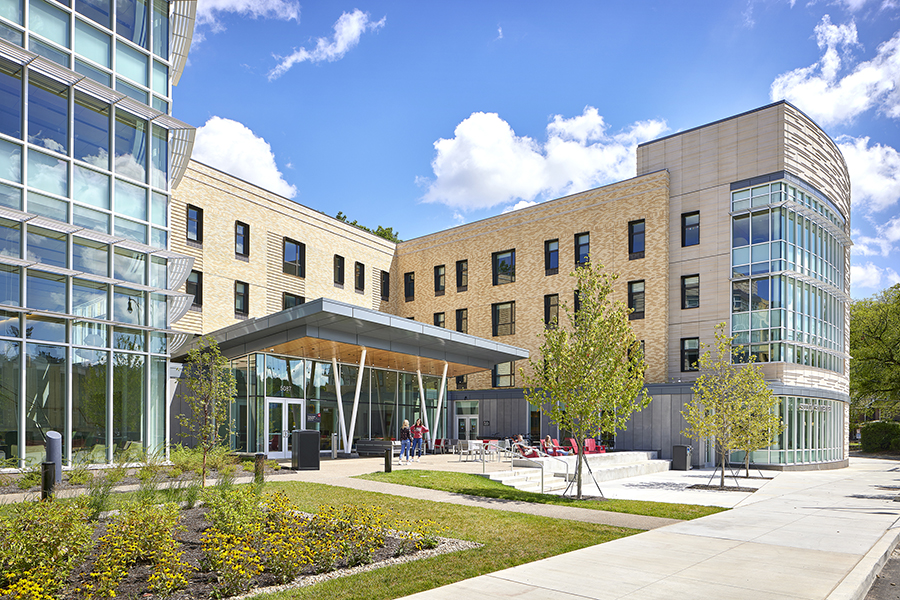
Sustainable Sites & Local Transportation
- In order to construct this building, a 1950’s building apartment building was abated and demolished. As part of this process, CMU donated more than 4,000 items for resuse, including doors, light fixtures, furniture, appliances and casework, to a variety of local nonprofit organizations.
- A green roof is located above the first-floor main lobby, helping to mitigate stormwater.
- Following the streetscape established at the Tepper Quad, this project adds stormwater landscape buffers between Forbes Avenue and the sidewalk to further separate pedestrians from vehicle traffic.
- Dedicated, secure bike parking is provided in the parking garage, along with a shower, to assist those commuting by bicycle.
- Two electric vehicle charging spaces were included in the 20-space parking lot.
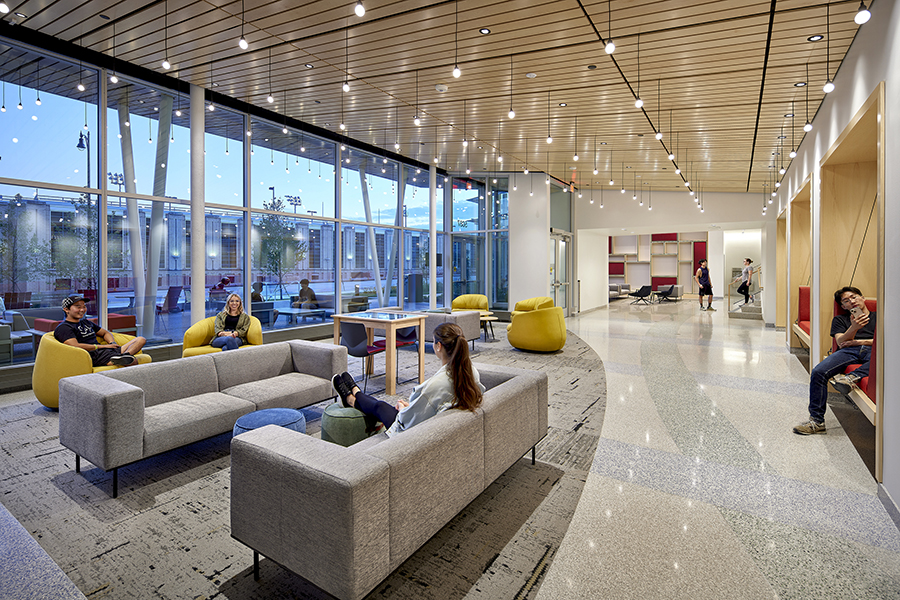
Water Efficiency and Energy & Atmosphere
- The building uses 29.41% less water than other similar buildings.
- The landscaping for the building uses native drought-resistant plants and has no long-term irrigation system.
- Overall, the building uses 24% less energy than a conventional building of the similar size and use (calculated by energy cost).
- All energy use is 100% offset by the purchase of renewable energy credits across the university.
- The building design includes passive elements, such as efficient exterior envelope and glazing, and exterior solar shading.
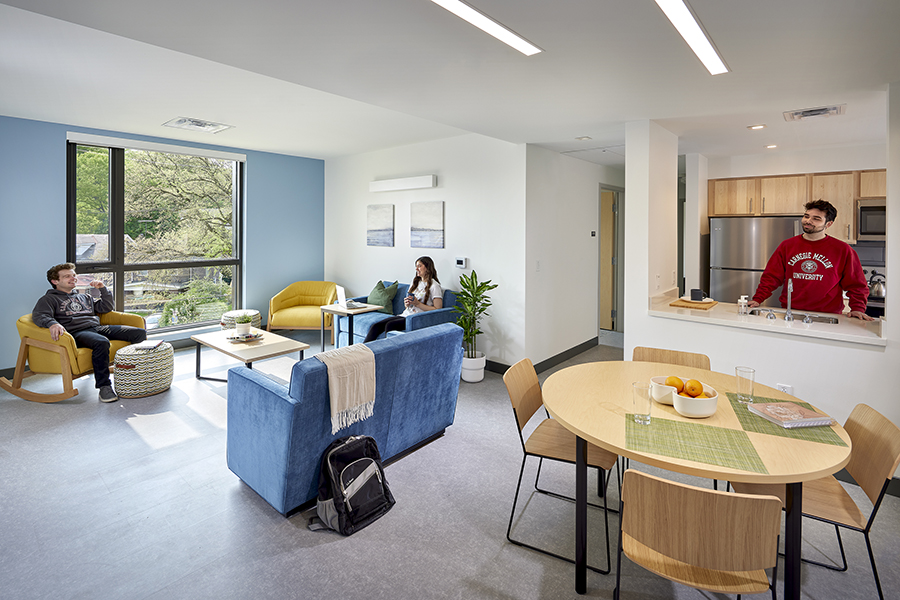
Materials & Resources
- All LED lighting was installed in the building to avoid the use of mercury-containing light fixtures.
- The building achieved a LEED innovation point for CMU’s green cleaning policy and integrated pest management systems.
- 28% of construction materials were sourced locally, reducing the carbon footprint of the building construction.
- Waste created during the construction of the building was either recycled or salvaged, diverting 80% of the construction waste from the landfill.
- Materials used in the building were carefully selected to feature materials that use recycled content – 30% of building materials include pre- and/or post-consumer recycled content.
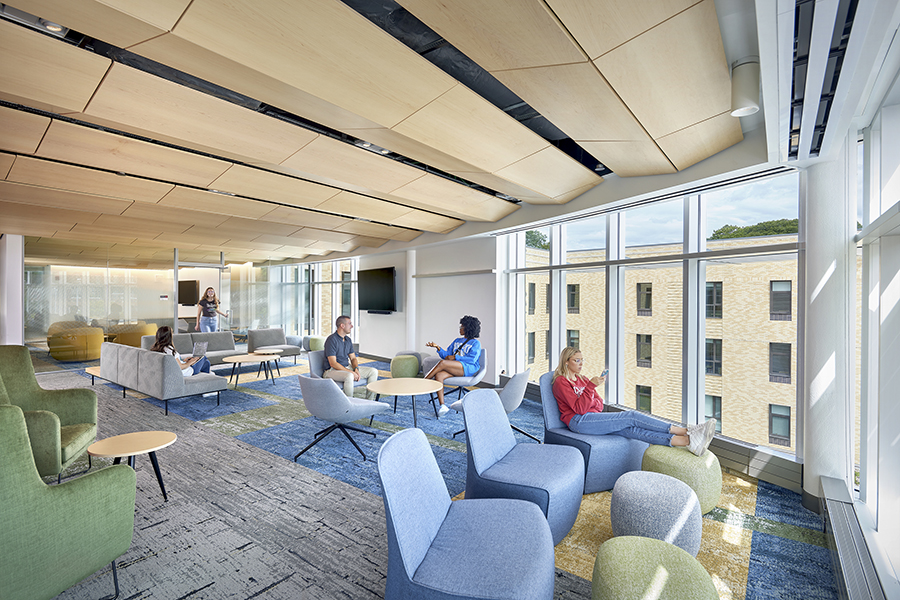
Indoor Environmental Quality and Innovation
- Occupant control of interior space temperature allows users to ensure thermal comfort.
- CO2 sensors trigger an automated system to cycle fresh air into the building.
- A healthy environment is maintained through the use of low-VOC and red-list-free finishes, a green cleaning program and comprehensive indoor air quality management.
- This facility incorporates a composting system for all residents’ use.
- The building was acknowledged as having beauty in design, in accordance with the WELL Features, Beauty and Design strategy.
- An education plan was developed to demonstrate and display the sustainable elements of the building.
Team Members
Campus Design and Facility Development worked in conjunction with the following organizations to complete the project:
Mosites Construction, Pittsburgh, PA – Construction Manager
Goody Clancy Boston, MA – Design Architect, Architect of Record
IKM Inc, Pittsburgh, Pa – Local Architect
Arup, Boston, MA – MEP, Structural, and Fire Protection Engineer
Langan, Canonsburg, PA – Civil Engineer